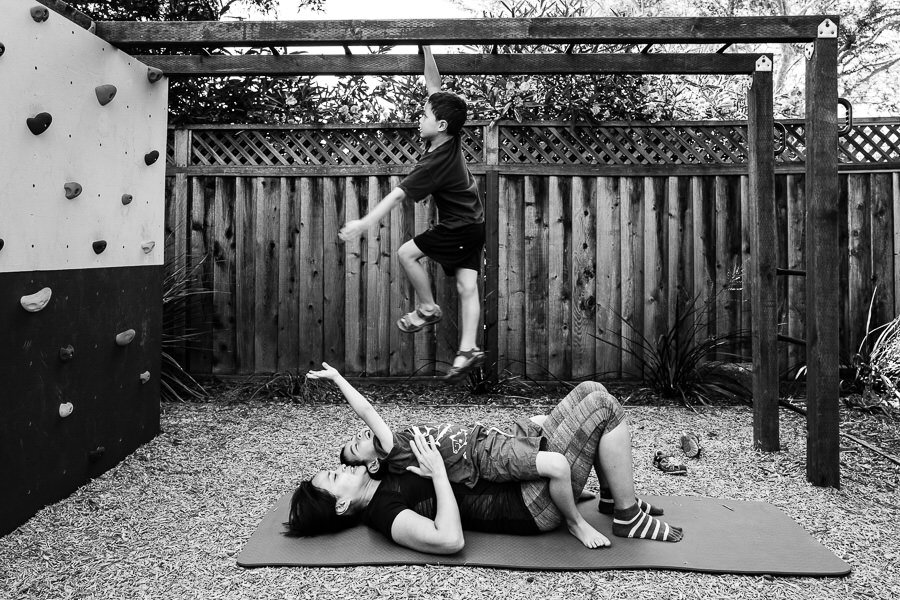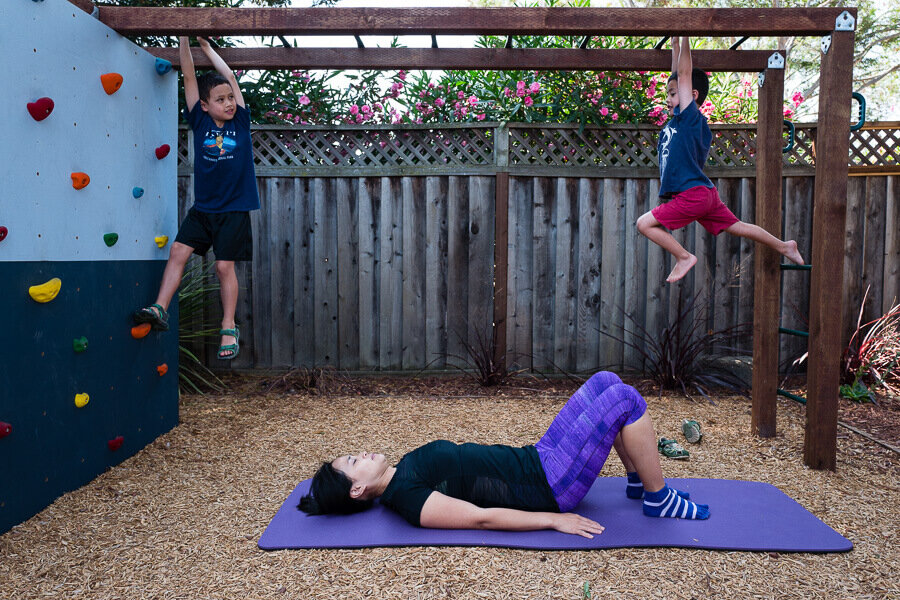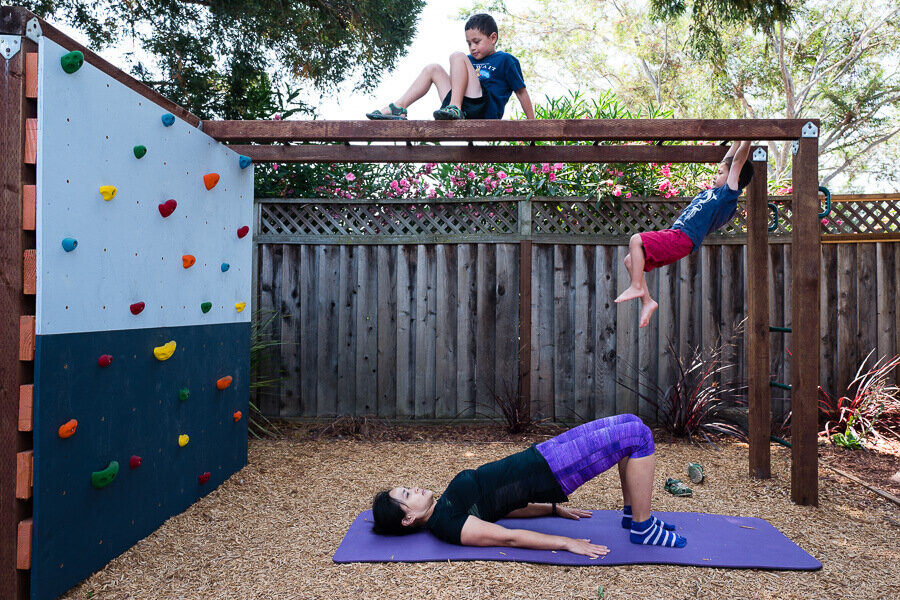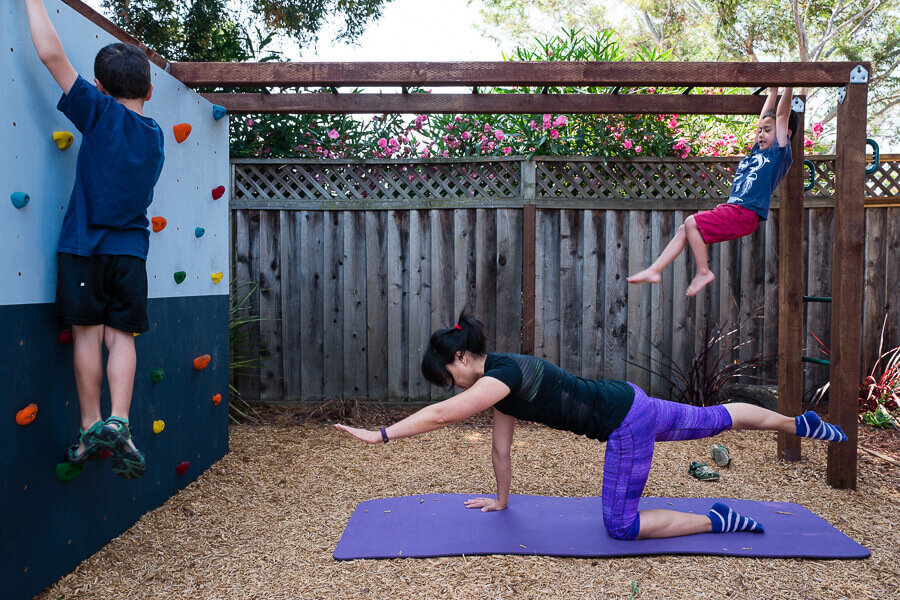Heal your body with post-natal moves so you can look after your baby

Written by: Amie Wang, pilates instructor and founder of Play It Fit. She has two kiddos of her own and is very used to the challenges moms face when it comes to squeezing in time for exercise.
There is no doubt that babies require a lot of attention. Whether you're a first-time mother or have older children, sometimes keeping up with the baby's feed-change-play-sleep cycle is all that you can manage given your sleep deprivation. However, postpartum is also a period when your body needs extra care. Your body has been through a lot to carry and deliver a baby, and it continues to change and work hard to nourish your growing baby.
As you bond with your new baby, this is also the time to reconnect the pelvic floor and deep abdominal muscles to heal your body and rebuild strength from the inside out.

Deep Breathing and Pelvic Tilt
This exercise helps reconnect your pelvic floor and deep abdominal muscles. The pelvic floor and deep abdominal muscles work together to stabilize the lower back and pelvis before the body moves. This exercise can be done starting around 1–2 weeks after giving birth if you're healing well and able to move around. Breathing deeply and mindfully can also provide much-needed relaxation during the early weeks with a new baby.
1. Starting position: Lie down on a mat or carpeted floor. Keep legs hip distance apart with knees bent. Keep pelvis in neutral (think long tailbone). Arms are by your sides, palms facing down.
2. Inhale deeply.
3. Exhale and use the abdominal muscles to gently tilt your hips toward your ribs. Imagine your hipbones moving toward your middle. Do not use your butt muscles (glutes).
4. Inhale deeply. Return pelvis back to neutral.
5. Repeat steps 3–4.
You can also do this when you're holding your baby while standing. It's a wonderful way to build core strength in preparation for that little bundle in your arms getting heavier. When standing, hold the baby's weight in the center of your body. Draw your shoulder blades down and pull your belly away from the baby as you exhale and imagine lengthening your spine from the tailbone all the way through the top of your head. Postpartum is also a time when suboptimal postural habits develop with baby in tow. Practicing holding your baby in this position will help minimize muscle imbalance from carrying your baby only on one side (or one hip) as most parents tend to do.
The following two exercises should only be done after your doctor has cleared you to return to regular exercise.

Shoulder Bridge
Strengthen your core by engaging your glutes while you continue to build posture awareness and abdominal strength. Use the same breathing technique as in the Deep Breathing exercise.
1. Starting position: Same as in the Deep Breathing exercise.
2. Inhale deeply to prepare.
3. Exhale and use your glutes to extend your hips and lift the pelvis off the mat. Engage your abdominal muscles to avoid arching your back (think of your torso as a solid plank, one long line from shoulder to knee).
4. Inhale and engage your inner thighs as you press your feet firmly down on the mat/floor. This will activate your hamstrings and keep your glutes active to support your body in this position.
5. Exhale and lower the pelvis back down by flexing your hips. Inhale deeply and release your tailbone.
6. Repeat steps 3–5.

Quadruped
This exercise will help strengthen your back, which is part of your core.
1. Starting position: Start with hands and knees on the mat/carpeted floor with your spine in neutral (long S-curve from head to tail). Make sure your wrists are shoulder-distance apart and below your shoulders, and knees are hip-distance apart and directly below your hips.
2. Inhale to prepare.
3. Exhale and reach the right arm forward and the left leg back. Think ofof creating a long line: Engage your abdominal muscles to keep your back from arching and your belly from sinking.
4. Inhale as you bring your right arm and left leg back to the mat/floor.
5. Repeat steps 3–4 with left arm and right leg.
6. Repeat 2–3 more times each side, alternating sides as you go.
Once your baby is strong enough to hold their head up, you can incorporate them into your exercises. Simply sit your baby on your belly facing you, and place your hands under their armpits for a secure hold when you're on your back. If you're on your hands and knees, place the baby on the mat/carpeted floor between your hands. Engage and bond with your baby-think funny voices, silly faces, songs.
You can do these exercises often and combine them with gentle stretching. Start with 3–5 repetitions of each exercise at the beginning and build up to 10 as you get stronger.
Remember to be patient. It took many weeks and months for your body to expand and make space while growing a baby inside. Allow your body time to heal and get back its strength and flexibility so you can stay active and keep up with your growing baby.
For more exercises, check out Amie's Movement Bits videos here.
Amie is a certified Pilates instructor and has practiced Pilates for over 15 years. She specializes in women (including pre-/post-natal Pilates), families and kids. Amie also runs Pilates After School program, a movement program for kids ages 6-12, in elementary schools. Amie is always learning and deepening her understanding of the human body and movement. She is currently geeking out with biomechanics – anatomy + physics!
